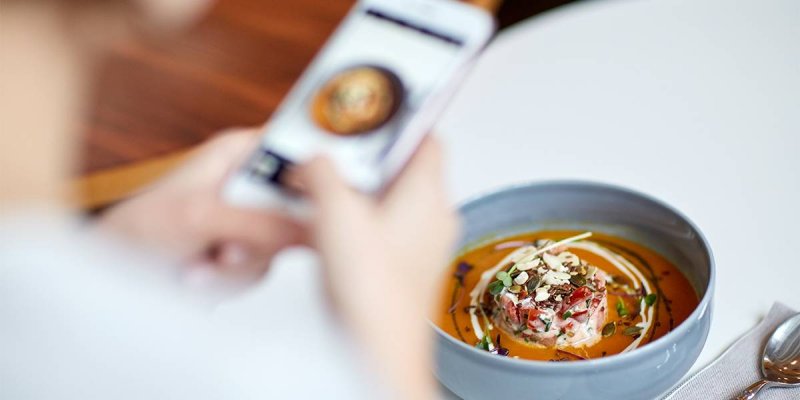The Apicius manuscript, a Roman cookbook that some believe dates back the 1st century said: “We eat first with our eyes.”
What makes food so attractive? In recent years, social media has become the prominent platform for foodies, with 158M public photos tagged as food porn on Instagram. The glamorization of food is now commonly referred to as food porn. Brooke Miller, blogger of @mrsmunchies, a food porn account with over 11,000 followers, defined food porn as “an over the top photo that presents food in an attractive way.” From making meals to discovering new, hip restaurants, food porn racks up millions of views.
Social media has transformed food into a popular form of art. Simple foods like melted cheese, avocado toast, and milkshakes with cake on top have broken the internet because of their visual appeal. Instagram food pages have allowed people to send footage of the most interesting, obscure looking foods into the public eye, broadening our food knowledge and leaving us drooling in front of our screens.
Though we may associate food porn to have emerged from social media, art shows that decadent portrayals of food date back to the Renaissance period. Brian Wansink, 57, a professor at Cornell University, told Cornell Food & Brand Lab that “Over the top meals aren’t a modern invention.”
For 500 years, artists have included luxury foods - those outside their typical diet - into their paintings such as lobster, meats, and colorful fruits. A journal published by SAGE Open examined the history of our obsession with rich foods. The analysis claimed that from the 140 food-related paintings from Europe and the U.S. that were inspected, the least frequently depicted foods were the most habitual ones (squash, chicken, eggs). The study went on to conclude that the most commonly represented foods were “aspirational, aesthetically pleasing or technically difficult for the painter.”
This illustrates that there has always been an artistic trend on illustrating complex, grandiose food as it is what depicts taste and luxury while the viewer has its hungry eyes fed by succulent and beautifully prepared dishes.

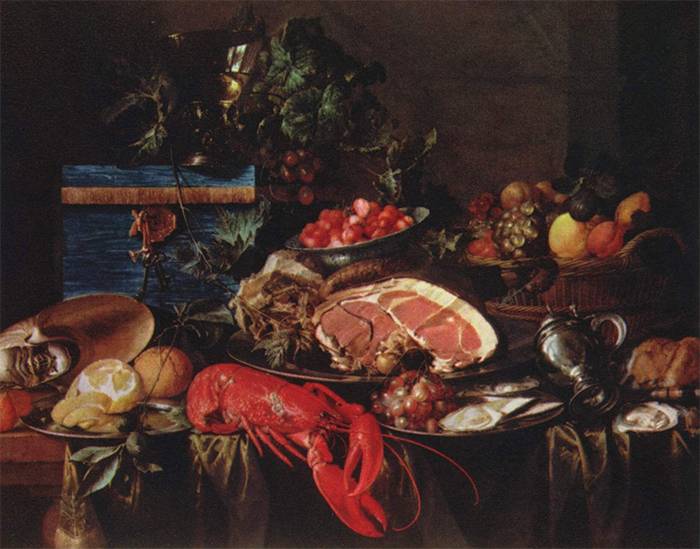
Jan Davidszoon de Heem, 1606
Food porn does not only consist of photos but videos too. BuzzFeed’s food page, “Tasty” is, without doubt, the most popular source of food porn on the internet. Its YouTube page has over 7,500,000 subscribers and its most popular video titled: “How To Cook a Cheap Steak vs. An Expensive Steak” has 9.9 million views. As a social news and entertainment company with a focus on digital media, BuzzFeed has converted food from a mere survival mechanism to a prime source of entertainment. It has transformed our perception of food: we do not only want to consume it but also crave the innovative methods and creative combinations that Tasty employs in its videos. Through its videos, Tasty is always pushing the limits and creating unconventional foods. Witnessing the preparation of a bacon-wrapped burger stretches the viewer’s imagination of how artistically broad food can be. Featured on Arabian Business Magazine’s 100 most powerful Arab women, Anissa Helou is a Syrian-Lebanese chef and food journalist who has spent her life sharing her passion for Levant cuisine.
Asking Helou on why she believes Tasty’s videos are so attractive, she said: “They pare down the steps of each recipe to what is essential. There is no distraction from the presenter, and no extraneous shots of what is pretty or… unnecessary.”
In a culture where our attention spans are shrinking, an accelerated, three-minute video is more accessible to the average user than Gordon Ramsay’s cooking programs that go into greater details and that are tailored to more serious cooks.
Featured on Arabian Business Magazine’s 100 most powerful Arab women, Anissa Helou is a Syrian-Lebanese chef and food journalist who has spent her life sharing her passion for Levant cuisine.
Asking Helou on why she believes Tasty’s videos are so attractive, she said: “They pare down the steps of each recipe to what is essential. There is no distraction from the presenter, and no extraneous shots of what is pretty or… unnecessary.”
In a culture where our attention spans are shrinking, an accelerated, three-minute video is more accessible to the average user than Gordon Ramsay’s cooking programs that go into greater details and that are tailored to more serious cooks.


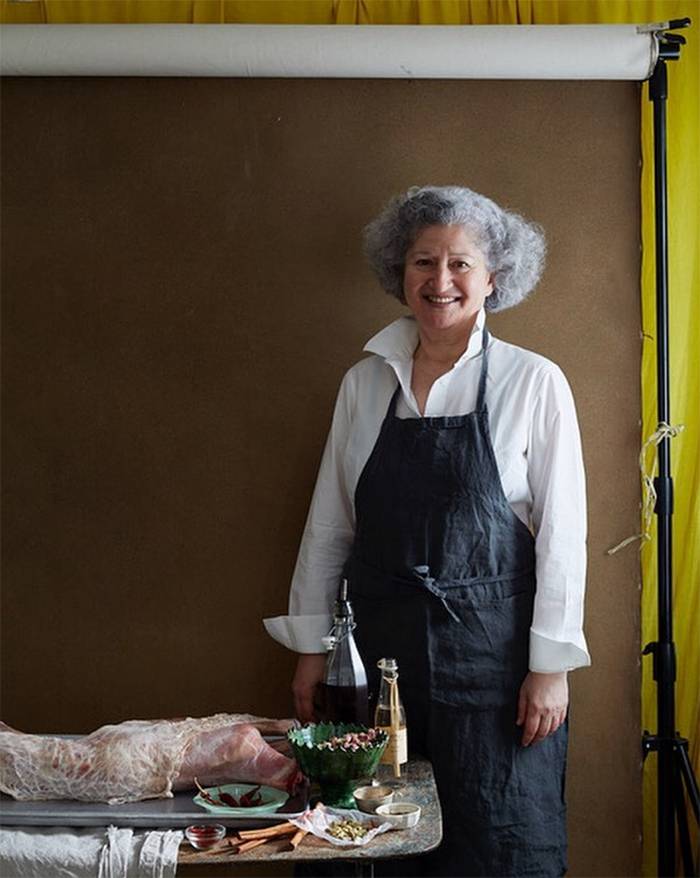
Oh I can try that!
“Oh I can try it,” said Jamal Saleh, Visual Director at Raseef22. Saleh believes that because food videos make cooking look so easy, it “humanizes the cooking experience” to the point which even your average Joe believes he or she is capable of producing mouth-watering results that the masses once thought only chefs were capable of producing. “I think people do try and recreate the recipes,” Miller said. “I get ideas from it but I do not know how many people take away the entire recipe, go home and follow it.” Tasty fanatics have followed their recipes to test whether or not one gets the same outcome as the professionals, and some have posted their results on YouTube. Though there has been a generally negative response to how trivial tasty videos are to follow, should it come as a surprise that condensing a thirty-minute meal into two minutes achieves mixed results? The transition from food blogs to social media handles like Facebook and Instagram is purely for our entertainment and to amass a wider fanbase. Bloggers would write down their recipe, highlighting the exact quantity of ingredients used, and many people I presume, would now not have the time for that. Through social media, food porn has been condensed to what people want to see: the colors, the final product, and an unlimited variety. In conversation with Manal Massoud, blogger of “Homemade by Manal” and her daughter, Mouna Sabeh, Massoud made the move from her blog to Instagram back in 2014. “As Instagram started to grow, food blogs got lower rates,” they said. Instagram offers a “simpler experience as it is only visual.” They went on to say that the “Blog is still not dead - but for serious food enthusiasts.” For Massoud, Instagram is not about going viral and coming up with the next avocado toast, but maintaining the taste-value of food while tempting her 35,000 followers with an exquisite array of colors.
 When asked whether she was a food blogger before Instagram, Tessa Gluck, blogger of @foooodieee, a food porn account with 501,000 followers, said “I wasn't’. I was always a ‘foodie’ but never blogged about it.” 47% of young people surveyed by Ypulse consider themselves foodies. As social media has been widely embraced by the youth, it should not come as a surprise that the #foodporn has become a global trend.
Though there were many foodies before Instagram, like Gluck, it has certainly expanded food culture.
Prior to Instagram, there was no platform to express a passion for food without dedicating one’s life to a blog. The emergence of social media outlets offers a user-friendly way for foodies to share their love of food. Thus, Instagram has unintentionally empowered a community of food lovers to share what is on their plate by simply touching their screens.
The visual importance of food has grown so much in our society that 44 percent of restaurant-goers admit to taking pictures of their food, according to Forbes. According to the Huffington Post, a study by Maru/Matchbox claims that 69% of Millennials take photos of their food before eating, highlighting that younger members of the society have pivotal in promoting the craze.
When asked whether she was a food blogger before Instagram, Tessa Gluck, blogger of @foooodieee, a food porn account with 501,000 followers, said “I wasn't’. I was always a ‘foodie’ but never blogged about it.” 47% of young people surveyed by Ypulse consider themselves foodies. As social media has been widely embraced by the youth, it should not come as a surprise that the #foodporn has become a global trend.
Though there were many foodies before Instagram, like Gluck, it has certainly expanded food culture.
Prior to Instagram, there was no platform to express a passion for food without dedicating one’s life to a blog. The emergence of social media outlets offers a user-friendly way for foodies to share their love of food. Thus, Instagram has unintentionally empowered a community of food lovers to share what is on their plate by simply touching their screens.
The visual importance of food has grown so much in our society that 44 percent of restaurant-goers admit to taking pictures of their food, according to Forbes. According to the Huffington Post, a study by Maru/Matchbox claims that 69% of Millennials take photos of their food before eating, highlighting that younger members of the society have pivotal in promoting the craze.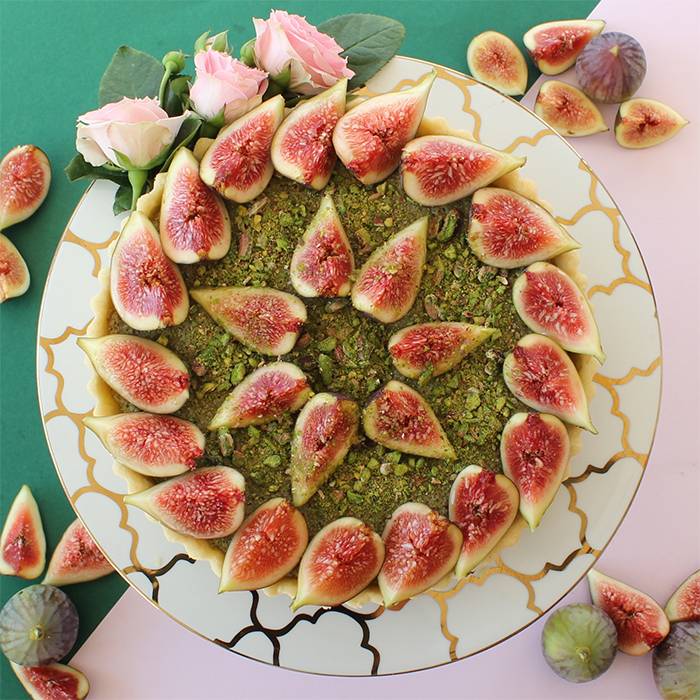
What goes on in your brain while watching food porn?
Or why you stop sub-consciously scrolling through your Instagram feed when you see a photo of a dangerously delicious slice of deep-fried mac n cheese? According to an Elsevier study titled, “Eating with our Eyes,” an attraction to trichromatic color developed when we were primates, and our genetic makeup is still wired to when food was more scarce. The excessive exposure to food porn on social media affects our neural activity and creates a “hungry brain.” In other words, our brains are becoming addicted to food porn. A study in Turkey from 2011 found that high-fat food images indulge human behavior more than low-fat foods would. This makes high-carb foods seem more pleasurable as it arouses the brain through increased Ghrelin, dubbed the “hunger hormone” by food scientists. To highlight the impact of food psychology on current trends, the rainbow bagel took foodies’ imaginations by storm. In 2016, Scot Rossillo broke the internet with his rainbow bagel, a creative spin on a traditional bagel with its multi-colored aesthetic. Rossillo’s invention defines the exploitation of visual hunger at its finest. The rainbow bagel is both aesthetically pleasing through its array of colors and its fatty content, with both traits stimulating neural activity. Here is another example of food porn that looks better than it tastes. Khaled Abu-Suud, 20, a Sophomore at Harvard University tried the bagel back in 2017 and claimed “It was a complete fraud. It looks so much more exciting than a regular bagel but tastes the exact same, which was underwhelming.”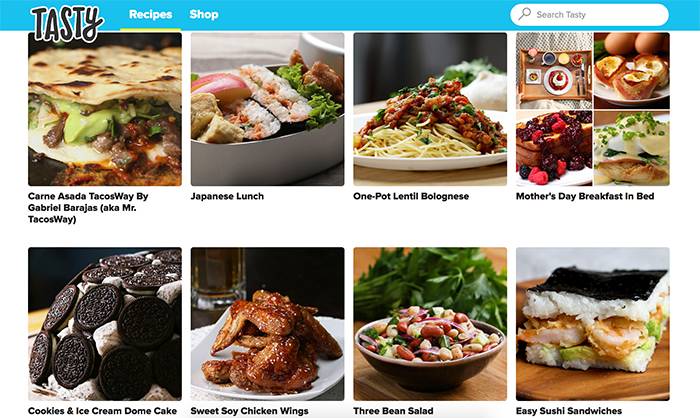


Would It Inspire Healthier Food Habits?
Food porn has enabled people to cultivate a new-found passion by celebrating something that brings us all together.
Food has an undoubtedly created a cult-like following and has the potential to inspire healthier food habits. Though this has not been the case, with an ever-rising obesity rate in the country, food bloggers and legislators alike could positively impact the eating habits of Americans.
The Elsevier study reinforces this idea: “The pleasure of seeing virtual food while eating has superseded the pleasure of seeing the real thing.” This essentially means that showing young people pictures of healthier, low-fat foods such as vegetables could decrease the chances of them defaulting back to carbohydrates and sugar. As Massoud and Sabeh said, “there is also the rise of plant-based diets” with hashtags such as #CleanEating and #MeatlessMonday becoming popular.”
Though we taste with our mouths, we first eat with our eyes. The glorification of food and the rise of food porn through social media has drastically changed our experiences and perceptions of the phenomenon for better or worse. Food porn has enabled people to cultivate a new-found passion by celebrating something that brings us all together. From the cronut and avocado toast to melted cheese and rainbow bagels, what will be the next item of food porn that breaks the internet?
Raseef22 is a not for profit entity. Our focus is on quality journalism. Every contribution to the NasRaseef membership goes directly towards journalism production. We stand independent, not accepting corporate sponsorships, sponsored content or political funding.
Support our mission to keep Raseef22 available to all readers by clicking here!
Interested in writing with us? Check our pitch process here!
